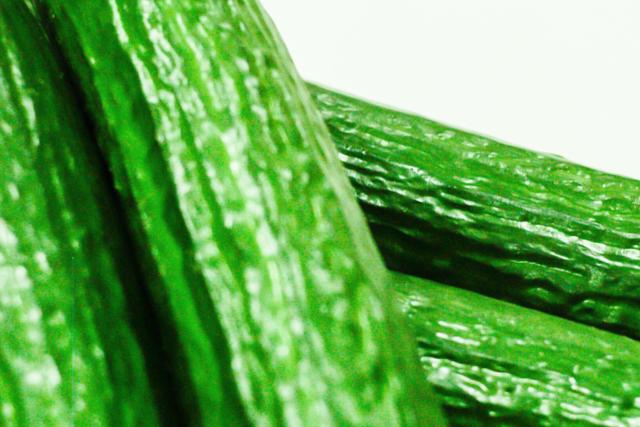The cucumber’s origin lies in the tropical regions of South Asia. In India, this crop has been cultivated for over 3.000 years. Over the time this food crop reached Egypt and became one of the favorite foods of the pharaohs. Over the years it became popular in Greece and Rome. Both Greeks and Romans used cucumber as a vegetable and for medicinal purposes. The Romans introduced it to the rest of Europe and subsequently they introduced it into China.
Description and characteristics:
The cucumber grown today can be classified according to various characteristics such as its size, shape and the colour of its skin, into three classes:
- Short cucumber (Spanish type): are small, with a maximum length of 15 cm and an average weight of about 125 grams. They have green skin with yellow stripes.
- Medium-long cucumber (French type): are fruits with a length of 20-25 centimeters. Within this group there are two different varieties: the cucumber with seeds and smooth skinned cucumber.
- Long cucumber (Dutch type): can reach up to 25-30 cm long and its skin is smooth with grooves. This is currently the most widely greenhouse grown cucumber on the Costa Tropical.
This fruit is of the pepo type, its color is from light green through to dark green, until reaching a yellowish colour when it is ripe, it is harvested before its physiological maturity. Inside there is a watery and whitish pulp. Commercially, to be highly valued it must be straight, fluted, well filled, well-formed, of a very dark green colour, showing no bottlenecks in the stem of the fruit and the most demanded commercial weight is between 350 gr. and 400 gr.
The flower consists of five petals, appearing in the axils of the leaves, and the petals are yellowish. These flowers can be hermaphrodites, although originally the cultivars were known as monoecious (with male and female flowers), current commercial varieties that are cultivated only have female flowers, which differ from the masculine ones in carrying an inferior ovary.
Cucumber leaves are characterized by being alternate and have a long petiole, they have a limbo with three lobes, the central lobe is more pronounced, which usually ends in a point. They are dark green in colour with very fine hair on the surface.
The stem of the cucumber is characterized by being herbaceous, creeping and / or climbing. It has a series of knots, from where a leaf and a tendril appears, these tendrils are leaves adapted for climbing purposes, finally in the axil of each leaf there is a lateral bud and one or more female flowers.
The root system of cucumber plant is very strong, very powerful, since it must provide water and nutrients in large quantities, given high productivity of this crop.
The optimum temperature for this crop is between 20 ºC and 30 ºC. Temperatures above 30ºC cause changes in the plants that directly affect the processes of photosynthesis and respiration, and night temperatures at or below 17 ºC cause malformations in leaves and fruits. The critical minimum night temperature is 12 ºC and at 1ºC the plant freezes. This plant requires high humidity, due to its large leaf surface, being 60-70% the optimum relative humidity during the day and 70-90% overnight.
NUTRITIONAL VALUE
Among the cucumber’s nutritional properties its high content of ascorbic acid is especially important which has antioxidant functions and small amounts of the vitamin B complex. The cucumber is low-calorie given that 100 g of this fruit contains only 13,28 kcal.
Beta carotene is found in the skin, but once the cucumber has been peeled, the amount is reduced to almost zero. Likewise, cucumbers with skin have a higher nutritional content providing us with fibre and vitamin A, which is lost when peeled. An interesting fact is that due to its silicon content, it is widely used in cosmetics due to its capacity to provide elasticity to the cells and having beneficial effects on skin, hair, nails etc. Traditionally it has been considered a great ally of the skin. Moreover its high water content offers diuretic and laxative properties. It's an ideal ingredient for weight control diets or slimming.
Areas where the cucumber is grown in Motril:
It is a greenhouse crop. The Dutch type is almost exclusively grown, distributed in the greenhouse areas of Puntalón, Torrenueva and on the slopes and plains of Carchuna where it is the main crop, as this area provides the ideal conditions of temperature and relative humidity for this crop in winter, being able to double or even triple the production compared to other areas such as Puntalón in the later cycles (plantations at the end of September).

